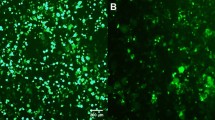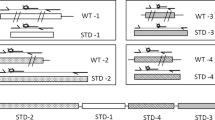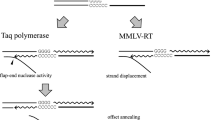Abstract
Synthetic genes offer many potential advantages over conventional plasmid DNA, such as simplicity in purification, absence of endotoxin contamination, and more importantly, flexibility in chemical modifications to render them specific properties. We have used PCR amplified fragments as a model to test the feasibility of using synthetic genes for gene therapy. The CAT reporter gene driven by the CMV promoter (CMV-CAT), ie a nuclear expression system, or by the bacteriophage T7 promoter (T7-CAT), ie a cytoplasmic expression system, was used to evaluate this concept. The expression efficiency of both plasmids (pUCCMV-CAT and pT7-CAT) and their corresponding PCR fragments (fCMV-CAT and fT7-CAT) were compared on a molar basis. Limited expression of CAT was found with fCMV-CAT. However, fT7-CAT consistently gave a CAT activity comparable to that of pT7-CAT. When fT7-CAT was codelivered with pCMV/T7-T7pol (a self-amplifying T7 RNA polymerase autogene), high CAT activity could be detected up to 9 days. This expression was much longer than the duration of expression with a nuclear expression system. These encouraging results imply that gene therapy with synthetic genes could be both feasible and efficient.
This is a preview of subscription content, access via your institution
Access options
Subscribe to this journal
Receive 6 print issues and online access
$259.00 per year
only $43.17 per issue
Buy this article
- Purchase on SpringerLink
- Instant access to full article PDF
Prices may be subject to local taxes which are calculated during checkout
Similar content being viewed by others
Author information
Authors and Affiliations
Rights and permissions
About this article
Cite this article
Li, S., Brisson, M., He, Y. et al. Delivery of a PCR amplified DNA fragment into cells: a model for using synthetic genes for gene therapy. Gene Ther 4, 449–454 (1997). https://doi.org/10.1038/sj.gt.3300413
Received:
Revised:
Accepted:
Issue date:
DOI: https://doi.org/10.1038/sj.gt.3300413
Keywords
This article is cited by
-
Single histidine residue in head-group region is sufficient to impart remarkable gene transfection properties to cationic lipids: evidence for histidine-mediated membrane fusion at acidic pH
Gene Therapy (2003)
-
Efficient in vivo gene transfer by PCR amplified fragment with reduced inflammatory activity
Gene Therapy (2001)



